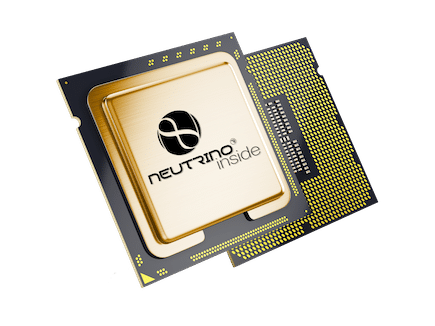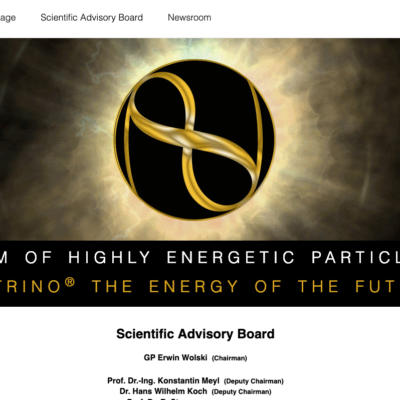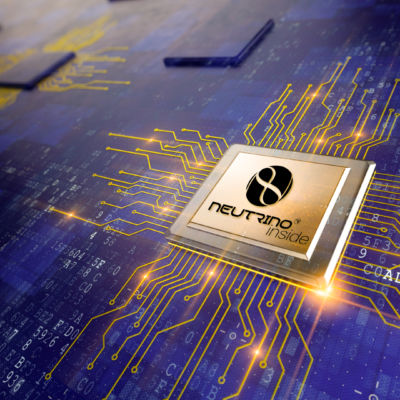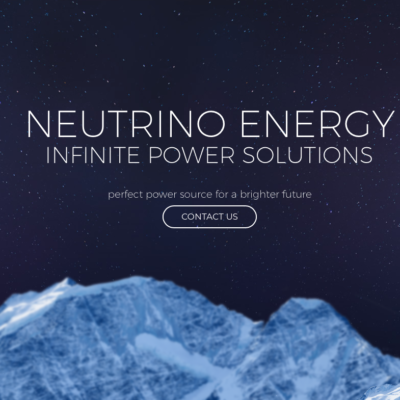Neutrino® Energy Group
German-American research and development company
The Neutrino® Energy Group first published its theory on decentralized energy generation from invisible radiation in early 2015. That same year, indirect support came from the Nobel Prize in Physics, awarded to researchers who proved that neutrinos indeed have mass. Two years later, a team at the University of Chicago confirmed through the discovery of coherent elastic neutrino-nucleus scattering (CEνNS) that neutrinos are capable of transferring momentum to matter. This established the physical foundation on which today’s neutrinovoltaic technology is built.
Just as wind sets the blades of a turbine in motion, neutrinos and other invisible forms of radiation impart momentum to molecules. For this to occur, they must collide with an ultra-dense nanomaterial. As they pass through these structures, they release a minute fraction of their kinetic energy. Every second, roughly 60 billion neutrinos cross each square centimeter of the Earth’s surface.
Since naturally occurring materials are not dense enough, this interaction usually goes unnoticed. Working with materials scientists, the Neutrino® Energy Group developed a patented multilayer structure made of doped graphene and silicon. These layers set atoms into vertical and horizontal oscillations. At an optimal thickness, resonance effects arise that transfer to the substrate and generate measurable electric current.
The larger the active surface, the higher the energy yield. In this way, continuous power flows can be realized, which are fundamentally sufficient to supply devices directly with energy, independent of cables, sockets, or weather conditions. The underlying calculation is described in the Holger Thorsten Schubart–NEG Master Equation for Neutrinovoltaics:
P(t) = η · ∫V Φ_eff(r,t) · σ_eff(E) dV
This formula precisely captures how conversion efficiency, radiation flux density, cross-sections, and material volume interact. Because multiple invisible sources act additively, the energy supply remains stable even when individual components fluctuate.
The age of Homo electricus is the age of perfect power, drawn from the environment by Neutrino Energy Harvesting systems. Life without electricity is no longer imaginable, yet conventional energy supply drags heavy problems in its wake. This is why scientists are working on new solutions. At first, Neutrino Energy Harvesting systems will serve as a complement, but in time they will replace batteries and accumulators entirely.
These systems harvest tiny amounts of energy from their immediate surroundings and convert them into usable electricity. The output can be consumed instantly or stored in supercapacitors and batteries. Advances in microelectronics, including new generations of MCUs, power components, and sensors, are opening application fields that would have been unthinkable only a few years ago. Step by step, neutrinovoltaic technology is emerging as a key enabler of independent and sustainable energy supply.
TECHNICAL BACKGROUND OF NEUTRINOVOLTAIC TECHNOLOGY
Neutrinovoltaic technology harnesses atomic vibrations within doped graphene-silicon layers, stimulated by invisible radiation sources such as neutrinos, cosmic muons, radiofrequency fields, thermal and infrared fluctuations, and subtle mechanical micro-vibrations. The decisive factor is the interplay of these additive forces, enabling uninterrupted energy generation around the clock.
Latest News, Information and Videos about Neutrino Energy:

NEUTRINO® inside: a new electric age
Social media

Questions?




